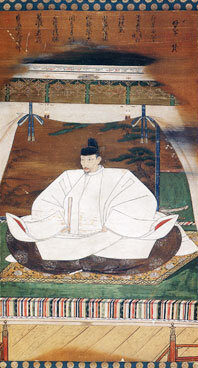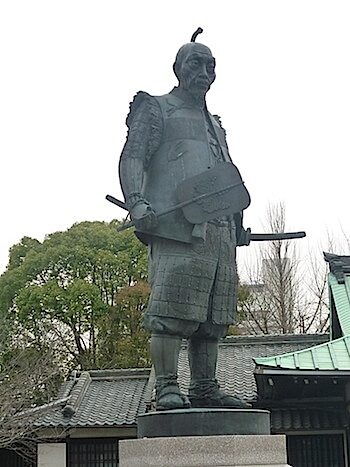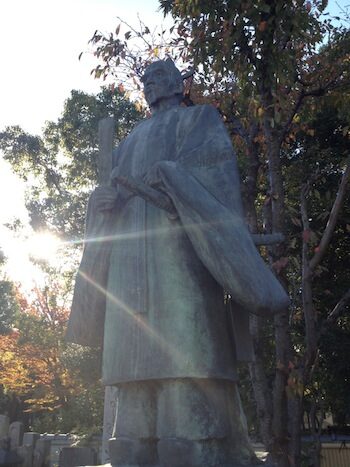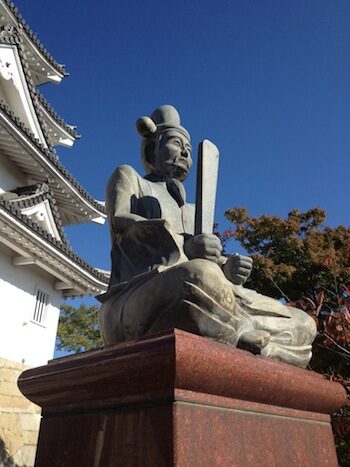Toyotomi Hideyoshi(1537 ~ 1598 )
Toyotomi Hideyoshi was not a physically strong man. He had risen rapidly in the ranks from being a lowly sandal-bearer to one of the most respected strategists in the land by merit of a strong intellect that allowed him to take over the helm from Nobunaga and eventually unify the nation.

Hideyoshi was born in 1536 in the village of Nakamura, Nagoya City. His father died shortly after his birth, and his mother remarried a lowly samurai who treated the monkey-like boy severely. As a child he was sent to a nearby temple to become a priest but absconded at age 15 to join the army of Matsushita Yukitsuna as a foot soldier. In 1558, Hideyoshi was given six ryo, a fair sum of money, to purchase a coat of chain-mail for his master. However the young samurai used the money to buy himself light armor and weapons and entered the services of Oda Nobunaga as a sandal bearer.
The story is well known that one cold winter’s morning, Hideyoshi put his masters’ straw sandals inside his kimono to keep them warm. Nobunaga, impressed by his attitude, rewarded him well, noting his intellect and promoting him as he rapidly distinguished himself.

Upon receiving news of Nobanaga’s death at the hands of a trusted general, Hideyoshi quickly turned his men on the traitor Akechi Mitsuhide.
Once Mitsuhide had been dealt with, Hideyoshi returned to Nobunaga’s castle at Kiyosu where he met with the senior retainers of the Oda clan and nominated Nobunaga’s infant grandson, Samboshi, as heir, assigning Nobuo and Nobutaka, the second and third sons of Nobunaga as the guardians of the infant until his coming of age.
Hideyoshi’s actions became suspect as he governed in the name of young Samboshi. He was challenged by Nobutaka, who called on Shibata Katsuie to oust Hideyoshi. Hideyoshi in turn sent Nobutaka’s brother Nobuo, who defeated his sibling in a siege of Gifu Castle. In 1583, Hideyoshi attacked and defeated Shibata at the Battle of Shizugatake.

Nobuo was next to find fault in having Hideyoshi hold the reigns of his father’s hard-won estates and
turned to Tokugawa Ieyasu for assistance.
The Tokugawa and Toyotomi armies faced off at Mt. Komaki north of Nagoya, and a battle was fought around Nagakute. Through negotiation, Hideyoshi was able to sue for peace, after which he returned to Osaka to begin occupying himself with the building of the magnificent Osaka Castle.
Hideyoshi had conquered the southern islands of Shikoku and Kyushu, and bringing the daimyo of the north under his control. He surveyed the land, standardized the currency, and to cease uprisings and war, confiscated swords from the peasantry. Hideyoshi further ordered all to remain in their respective castes, of warriors, farmers, craftsmen, or merchants.

With the nation at peace and many hundreds of thousands of samurai warriors now idle, Hideyoshi launched two major campaigns against the Korean peninsula. When these men returned to Japan, however, they found political circumstances had changed dramatically.
It was at Fushimi Castle on August 18, 1598 that Hideyoshi died at the age of 63 leaving his vast empire to his five-year-old son, Hideyori. Determined that the Toyotomi family should retain power, Hideyoshi had appointed a board of five regents, the Tairo, to rule in his son’s stead. It was the actions of one of those regents, Tokugawa Ieyasu, who would again bring the nation to civil war, and then emerge victorious.